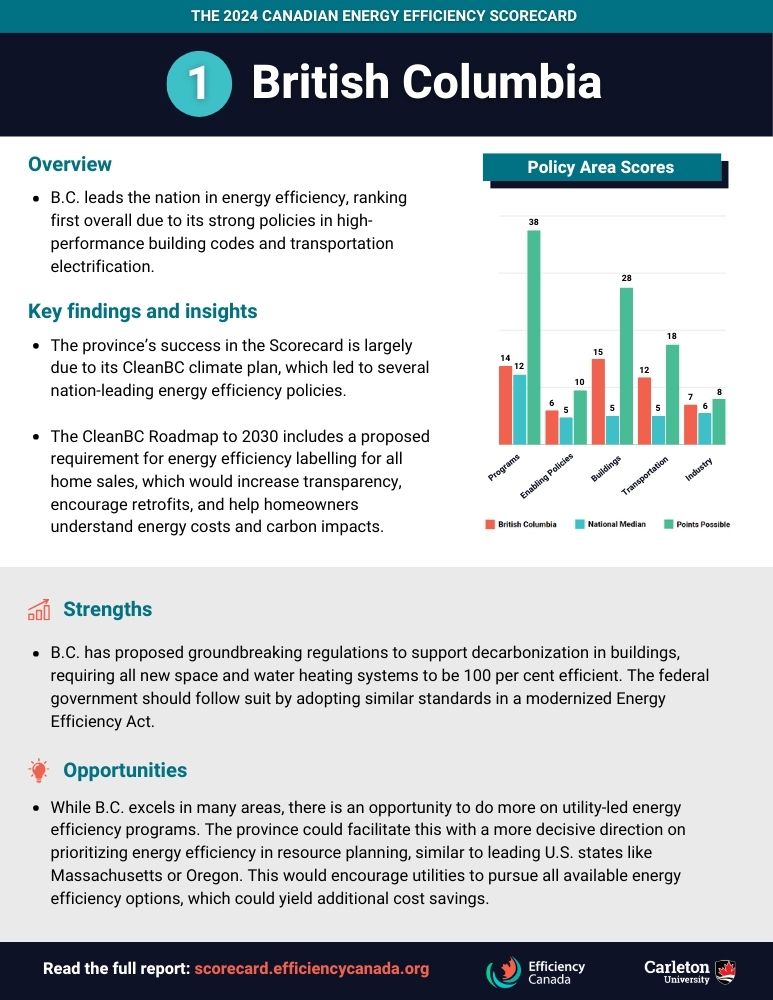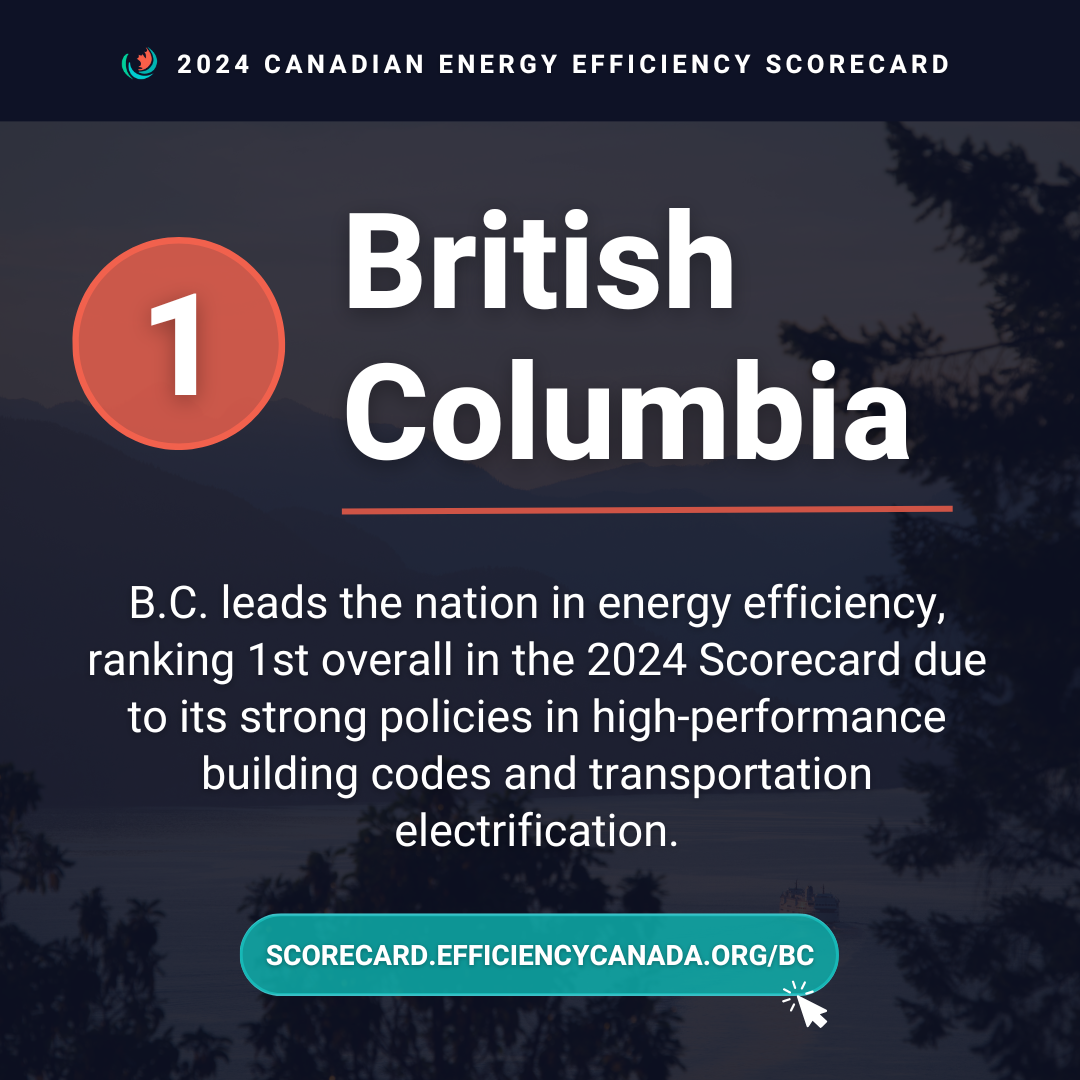Canadian Energy Efficiency Scorecard:
Provinces and Territories
British Columbia
B.C. leads the nation in energy efficiency, ranking first overall due to its strong policies in high-performance building codes and transportation electrification.
Key findings and insights
The province’s success in the Scorecard is largely due to its CleanBC climate plan, which led to several nation-leading energy efficiency policies.
The CleanBC Roadmap to 2030 includes a proposed requirement for energy efficiency labelling for all home sales, which would increase transparency, encourage retrofits, and help homeowners understand energy costs and carbon impacts.
Strengths
B.C. has proposed groundbreaking regulations to support decarbonization in buildings, requiring all new space and water heating systems to be 100 per cent efficient.
The federal government should follow suit by adopting similar standards in a modernized Energy Efficiency Act.
Opportunities
While B.C. excels in many areas, there is an opportunity to do more on utility-led energy efficiency programs.
The province could facilitate this with a more decisive direction on prioritizing energy efficiency in resource planning, similar to leading U.S. states like Massachusetts or Oregon.
This would encourage utilities to pursue all available energy efficiency options, which could yield additional cost savings.
Policy Area Scores
British Columbia
National median
Points possible
Programs
14 points
12 points
38 points
Enabling policies
6 points
5 points
10 points
Buildings
15 points
5 points
28 points
Transportation
12 points
5 points
18 points
Industry
7 points
6 points
8 points
* Points are rounded to the nearest whole number. Totals might not sum due to rounding.
2024 Scorecard ranking

British Columbia

Prince Edward Island

Québec

New Brunswick

Nova Scotia

Ontario

Yukon

Manitoba

Saskatchewan

Newfoundland and Labrador

Alberta

Nova Scotia
40/100 Points
Prince Edward Island
45/100 Points
New Brunswick
43/100 Points
Newfoundland and Labrador
14/100 Points
Québec
45/100 Points
Ontario
33/100 Points
Manitoba
30/100 Points
Saskatchewan
16/100 Points
Alberta
8/100 Points
British Columbia
54/100 Points
Yukon
32/100 Points
2024 Scorecard ranking

British Columbia
54/100 Points

Prince Edward Island
45/100 Points

Québec
45/100 Points

New Brunswick
43/100 Points

Nova Scotia
40/100 Points

Ontario
33/100 Points

Yukon
32/100 Points

Manitoba
30/100 Points

Saskatchewan
16/100 Points

Newfoundland and Labrador
14/100 Points

Alberta
8/100 Points



